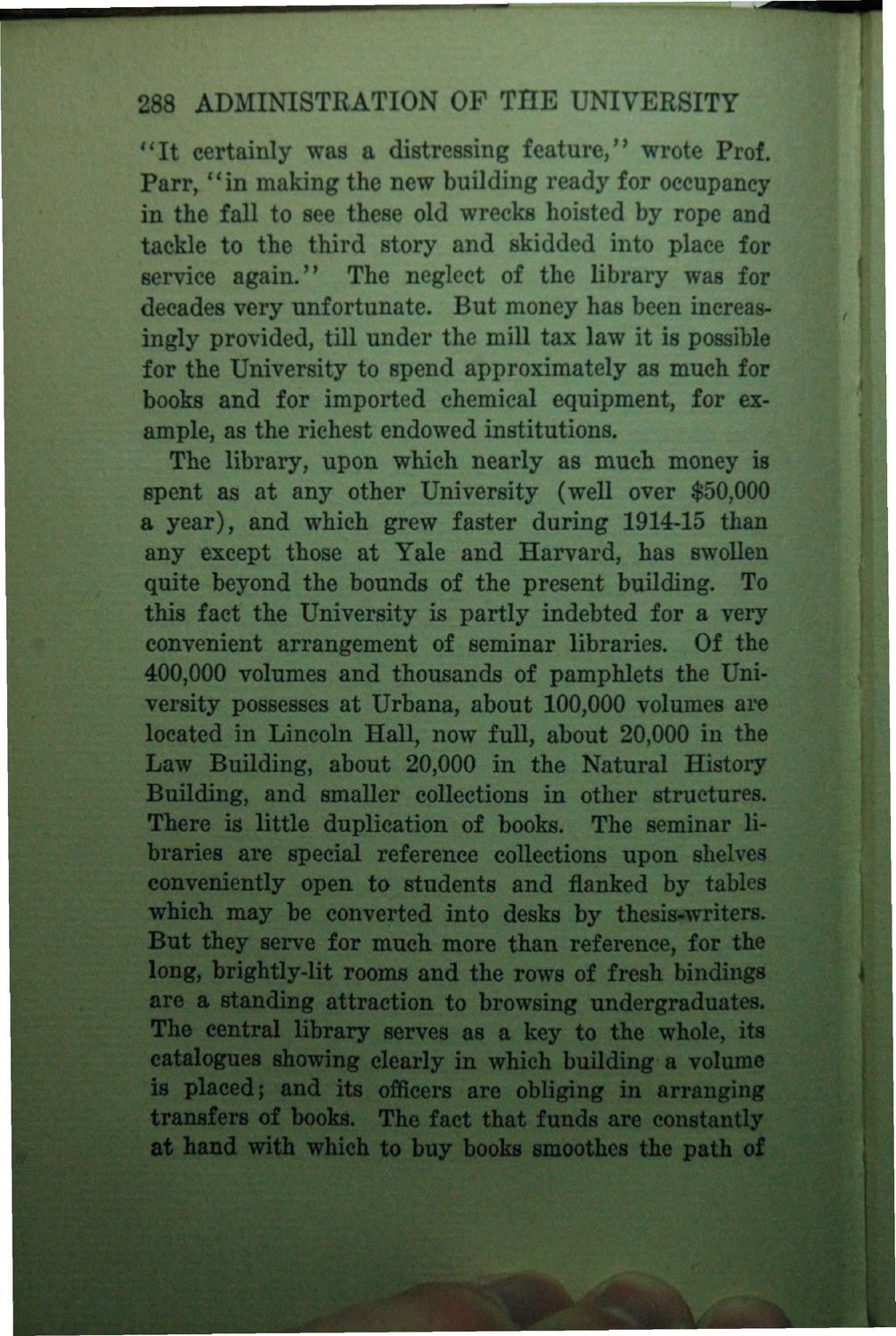| |
| |
Caption: Book - History of the University (Nevins)
This is a reduced-resolution page image for fast online browsing.

EXTRACTED TEXT FROM PAGE:
288 ADMINISTRATION OP THE UNIVERSITY " I t certainly was a distressing feature/j wrote Prof. Parr, "in making the new building ready for occupancy in the fall to see these old wrecks hoisted by rope and tackle to the third story and skidded into place for service again." The neglect of the library was for decades very unfortunate. But money has been increasingly provided, till under the mill tax law it is possible for the University to spend approximately as much for books and for imported chemical equipment, for example, as the richest endowed institutions. The library, upon which nearly as much money is spent as at any other University (well over $50,000 a year), and which grew faster during 1914-15 than any except those at Yale and Harvard, has swollen quite beyond the bounds of the present building. To this fact the University is partly indebted for a very convenient arrangement of seminar libraries. Of the 400,000 volumes and thousands of pamphlets the University possesses at Urbana, about 100,000 volumes are located in Lincoln Hall, now full, about 20,000 in the Law Building, about 20,000 in the Natural History Building, and smaller collections in other structures. There is little duplication of books. The seminar libraries are special reference collections upon shelves conveniently open to students and flanked by tables which may be converted into desks by thesis-writers. But they serve for much more than reference, for the long, brightly-lit rooms and the rows of fresh bindings are a standing attraction to browsing undergraduates. The central library serves as a key to the whole, its catalogues showing clearly in which building a volume is placed; and its officers are obliging in arranging transfers of books. The fact that funds are constantly at hand with which to buy books smoothes the path of
| |